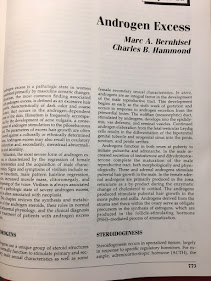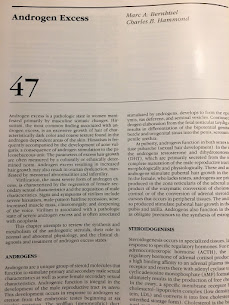I guess it started with my love of books and information, following my parents' example of their love of books (and borrowing my dad's reading glasses). I also was taught the medical vernacular as a child. I never knew the word Belly Button or even Navel until grade school. It was the Umbilicus. When my fellow first graders were reading about Dick and Jane, I had memorized the word/malady from my neurologist dad, amyotrophic lateral sclerosis- ALS-Lou Gehrig's disease. I also read all the books about Lou Gehrig's baseball career.
| My Dad, Harris Glenn Bernhisel, did his under-graduate work and medical school at the Univeristy of Utah. His internship was in Albany N.Y. and residency in neurology at the University of Minnesota. He later did a second residency in radiology, which is what he practiced into his seventies, mainly in Utah. |  |
My mother, Bethine Sax Bernhisel, met my father at the University of Utah, while she was in nursing school. She later received her Bachelors Degree in nursing at the University of Minnesota (where I was born).
 | This is Dr. John Milton Bernhisel-my great-great grandfather. He completed his medical school at the U of Pennsylvania. He was trained in "blood letting" (the practice at the time-and which reportedly had contributed earlier, to President George Washington's death), but there is no indication that Dr. JMB actually used this "therapy". He joined the Church of Jesus Christ of Latter day Saints, and moved to Nauvoo Illinois (then the geographical center of the Church) and lived with Jospeh Smith and Emma Smith (and delivered at least one of her children). He essentially served as a mediator/negotiator for the Church and for Joseph Smith in dealing with state and local governments. He was mentioned as a great help and hero to a group of African Americans who came to Nauvoo and were in dire need of his medical care and compassion. Joseph mildly rebuked him one time for standing up each time that Joseph entered the room in which John Milton was in. JMB stated: "I will always stand when the prophet of the Lord enters." JMB migrated to what is now Utah and was selected/elected as the Congressman in Washington D.C. , representing the Deseret Territory-eventually the state of Utah. He did serve in the U.S. congress for 5 terms and did know, met and communicated with Abraham Lincoln. President Lincoln, in a letter written during the Civil war, described JMB as being loyal to the country and trustworthy and projected that he and the people of Utah would stand with the Union. JMB's son, my great grandfather- JM Bernhisel II and my grandfather, Harris Faye Bernhisel, were famers in Lewiston, Cache Valley, Utah. So, we seem to have been Docs & Farmers in the "Bernie" family. |
 | In addition to my father and mother being in medicine, my Dad's older brother Ted Bernhisel (internal medicine), two of Ted's children-my cousins Kurt Bernhisel (Emergency Department director at the U of Utah) and Jan Bernhisel Broadbent (pediatric allergist ) are physicians as well as a number of children and grandchildren. My sister Gretchen Bernhisel Wilcox and cousin Liz Wilson Roach are RNs.

This is Dr Edward Hashimoto, who interestingly, was my professor of Anatomy (former surgeon) in 1975-1976 as he was for my parents in the early-mid 1940s. My parents related one day to me that after the attack on Pearl Harbor by the Japanese, while they were awaiting for him to enter the classroom, the room was abuzz with speculation because of Dr. Hashimoto's Japanese ancestry. He did enter the room and exclaimed to all-"hey don't look at me that way--I'm IRISH." I remember a very important lesson (non-anatomical) he taught me and all my medical school classmates. He stated that one time while operating on a patient, nothing was going right and there was bleeding all over the place. He said, "I could have panicked and I did somewhat, but I packed the abdomen with lap pads (large laparotomy/surgery pads) to stop the bleeding, backed up a little--leaned my back against the wall, and then weakly asked 'does anyone know what the heck to do?'. Not hearing an answer (from the assisting doctor, the nurses or scrub techs), I proceeded to take one lap pad out at a time, stopping the bleeding in each area as I progressed and finished the surgery." This was an important lesson for me as I faced desperate situations both in and out of medicine in which I remembered his advice to take a breath, pack up the area, stop the bleeding, analyze, think it through and proceed onward and upward.

|
I started medical school at the University of Utah in the fall of 1975. Previously, I had worked for my Dad as an X-ray assistant since high school and later a technician while in pre-med and in medical school. I also worked as an Emergency Room tech at LDS hospital during my last two years of undergraduate school. I graduated with a Bachelor of Science degree in biology in 1975.
While in medical school, Julee and I had two children. Heidi (Rex) in 1976 during the spring of my first year in medical school, and Preston in the fall of my third year in 1978. We lived in my Grandmother Sax's home in the basement area in Bountiful, Utah. My inclination in my clinical years of medical school, was to go into surgery. However, I really enjoyed the atmosphere of Obstetrics and Gynecology as I did my clinical rotation during my third year in medical school. I did research with the Chairman of Ob/GYN, Dr. James Scott, for my senior medical school honors program. Testing mice, to which I had removed their thyroid glands and to which I gave them immunological injections. My research was presented and published in the Society of Gynecological Investigation. 
This is Heidi with me in the lab that I was working in- at the U of U hospital research lab with my mice as a 4th year medical student. 

Julee, my wife, and I got our graduate degrees on the same day in 1975. Julee received her Masters degree in teaching children with learning disabilities and I got my M. D. . I did graduate with honors (Alpha Omega Alpha), which I did not expect. An interesting side note- on the day that we got our graduate degrees, I saw an old high school football coach of mine who was now teaching at the U of Utah, and who was with a bunch of students. I had played in a high school football game as a junior in which as I tackled an opposing running back, and dislocated my middle finger so that at the finger's first knuckle joint, it was pointing sideways/perpendicular to my other fingers. Somewhat freaked out, I headed to the sidelines where this coach pulled out and up on that injured finger, putting it back in a normal position, taping it to my ring and index finger and then put me right back into the game. As I walked with my medical diploma, I thought-"I could have potentially lost any chance at performing surgery, if the finger did not heal up properly" (which it fortunately did). I debated on going up to him to let him know this, but I ended up just waving at him and smiling.

My first year of residency in Ob/Gyn at the U of Utah. I am 4th from the left/first row, next to Dr Scott, the head of the Department

Medical Helicopter flying into the University of Utah Hospital
Residency-University of Utah 1979-1983
Internships and residency programs are generally decided upon in the third year of Medical School. Julee and I visited programs at the Universities of Iowa, Michigan and Minnesota. All of them had an interest in me and it finally came down to a decision between the U of Utah and Iowa. We decided to stay at Utah and buy a home in Bountiful (10 minutes from my parents home). We were pretty poor during my medical school years and in those days (really always), residents were not payed very well. I did "moonlight" in emergency departments in Preston Idaho and St George Utah in my second to fourth years of residency. I recall while covering the Preston emergency room, that an Idaho cowboy-rancher came in all banged up with bruises and lacerations. He was somewhat groggy, and had what appeared to be a broken arm. A large truck had run into him and his cattle has he was hearding them down a local canyon on his horse. I worked with the ED nurse to clean him up, suture his lacerations, put a cast on his arm and watched him as he became more alert as we finished. At that point, I noticed that my nurse looked exhausted and like she was going to faint. I had her lay down on a gurney to rest. It was then that she told me that the beat up cowboy--was her husband.
On some Emergency Department weeks, I would work Thursdays on call in Ob/Gyn, getting little sleep if any at night in the hospital. Then, after my work was finished at the hospital, I went to one of the EDs Friday evening to cover it for emergency admissions. Typically I would not get a lot of sleep on the Friday and Saturday nights in the hospital, and then I would come home on Sunday night and go back to my residency duties on Monday morning. The helicopter pictured above the building ( the University of Utah Hospital/Medical School) was also a common way of transportation for us as we were sent to help pick up sick patients, usually pregnant, from different sites in Utah, Wyoming and Idaho (or other places). We would watch over the patients as we rode in the helicopter, flying back to the U of U hospital. I never had to deliver a baby in flight, but I had a nurse who often got severely nauseated during the flight in the helicopter, so that I had to have her lay down while I gave her a shot of an anti-nausea medication.Lyndi Bernhisel, born at LDS hospital (part of our residency training facilities ) coming home. The day after call in the hospital at the U of Utah We had two children born (Brooke and Lyndi) during my residency to make our family a total of four kids as I finished my four years of residency in Ob/Gyn.
Brooke was born my third year and Lyndi (pictured above, outside LDS hospital) was born during my fourth (Chief Resident) year. LDS hospital was the second hospital that we worked in and where I spent half of my first year of residency in.
The second picture is the day after being on call at the University and delivering babies all night long. The last picture is the group of residents and facultyGroup picture in 1983, my fourth year/Chief Resident (Richard Worley front, second from left; James Scott-Chairman of OB/GYN, front-third from right; Neil Kochenhower-(Fetal Maternal Medicine)-front far right. I am in the second row-second from left.
Durham N.C., Duke fellowship in Reproductive Endocrinology and Infertility1983-1985 Sarah P Duke Garden |














































































































































No comments:
Post a Comment